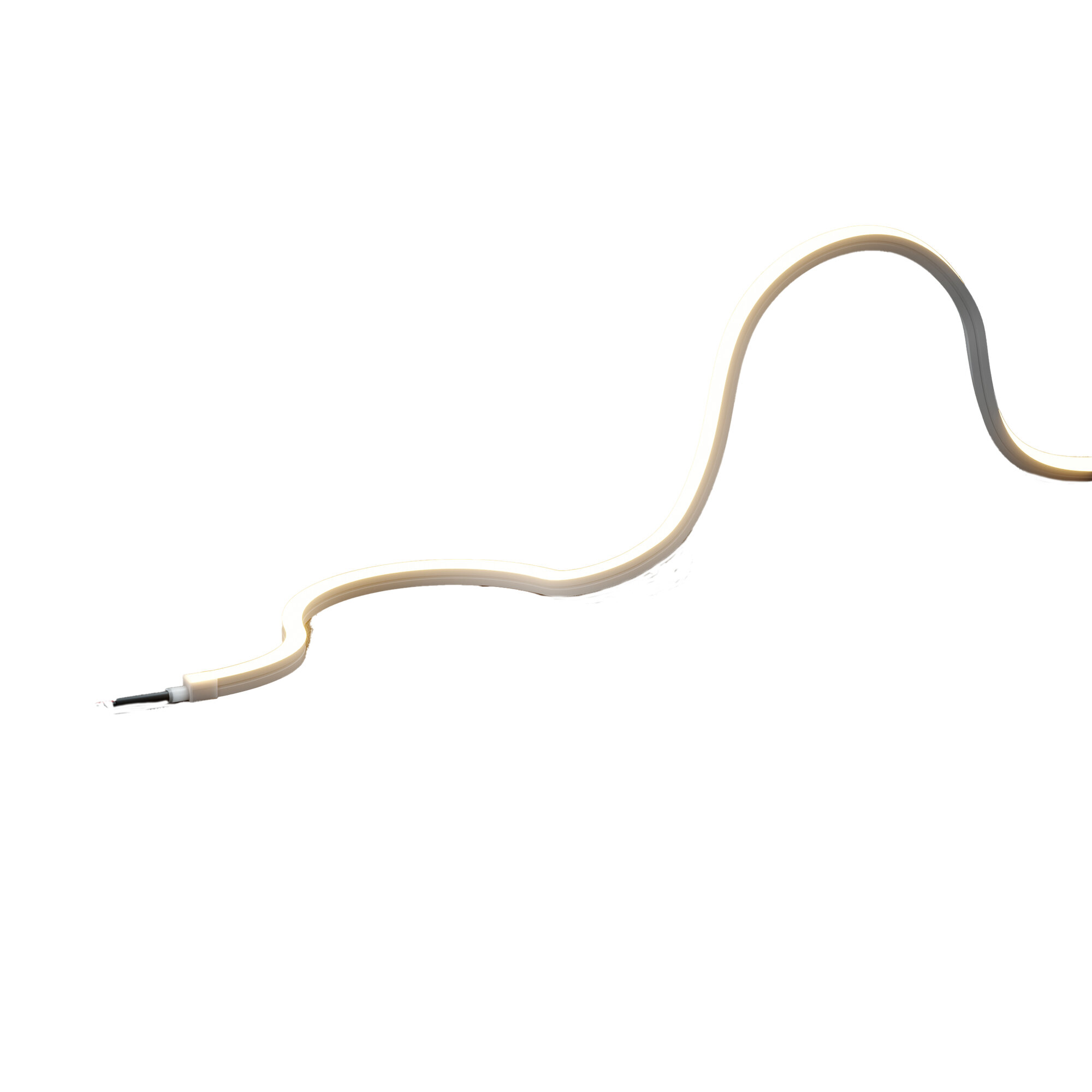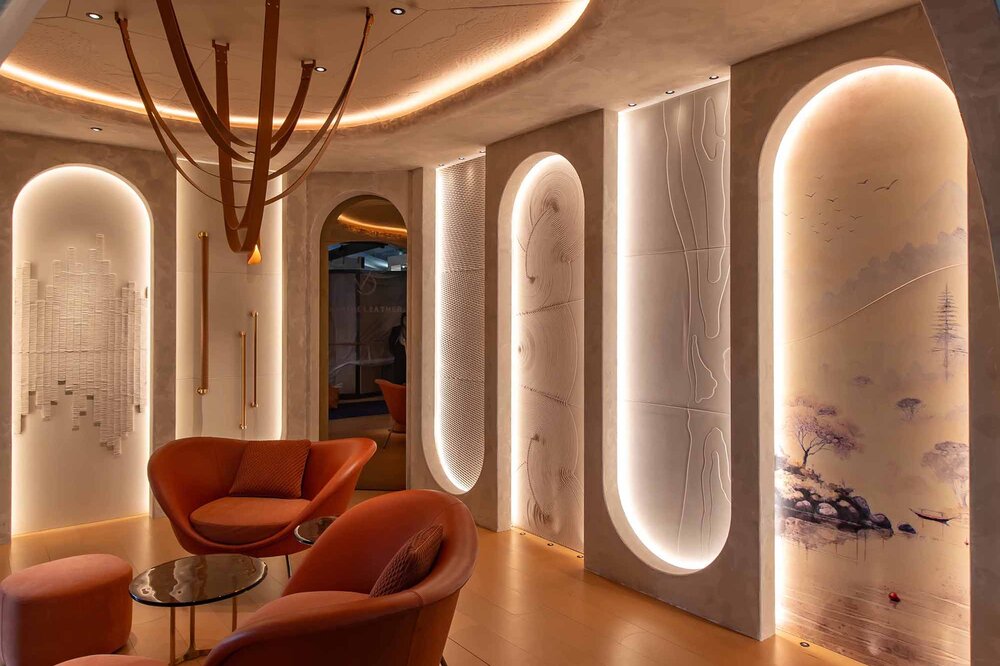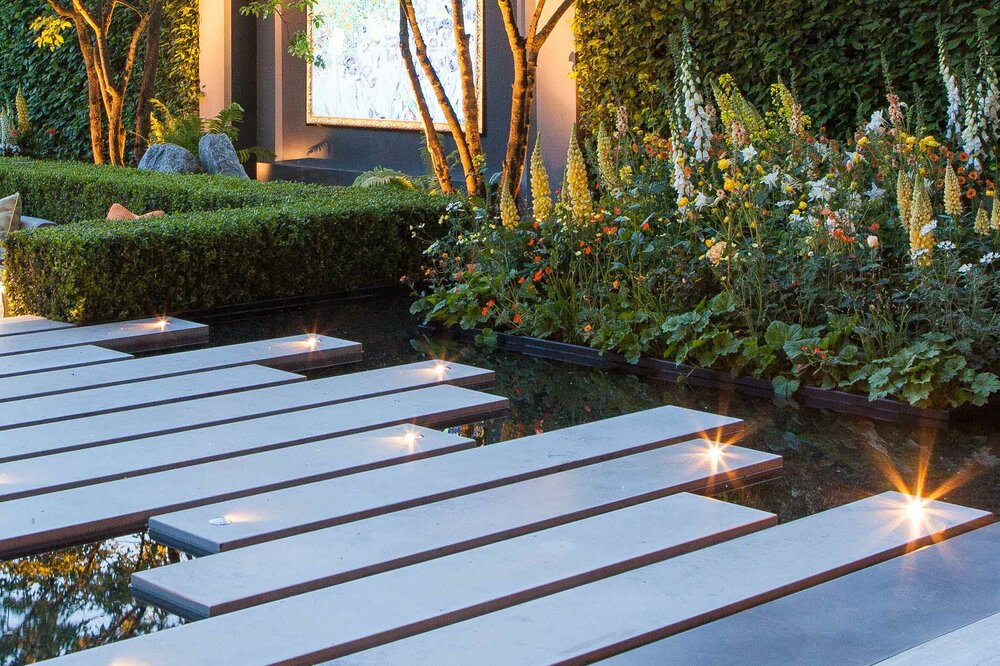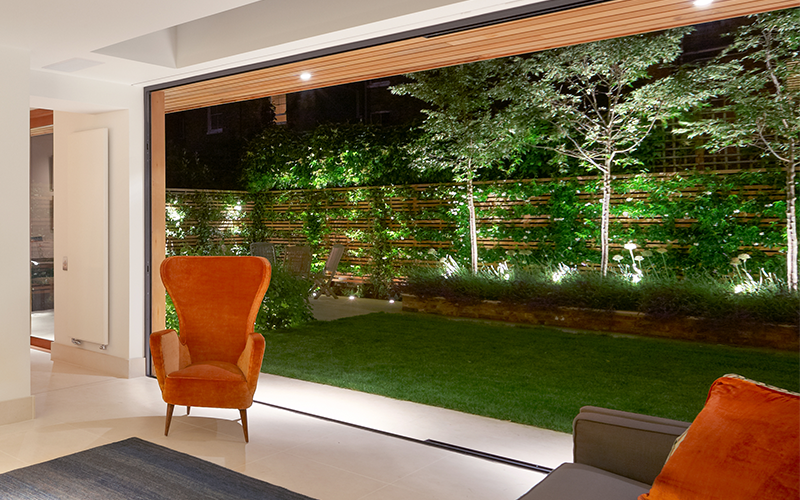
Small gardens and terraces provide a welcome extension of the interior space by day, but can be forgotten at night unless they are lit says Sally Storey, our Creative Director. They can act as an extra room, with interesting features to look at, so why block them out at night with curtains and blinds? Lighting them interestingly keeps that feeling of space alive in the evening and night. A well-designed small garden lighting scheme draws the eye outside to enjoy the garden features in a new way by night. And if the interior has large expanses of un-curtained glazing, lighting the exterior close to those windows will prevent them becoming a black mirror at night.
In this living room, the full-length glazing has no curtains. Polespring downlights in the soffit, just outside, light the stone, which matches the inside flooring, creating a strong inside-outside feel. Kew spotlights at high level light down the trees beyond create the next focus.
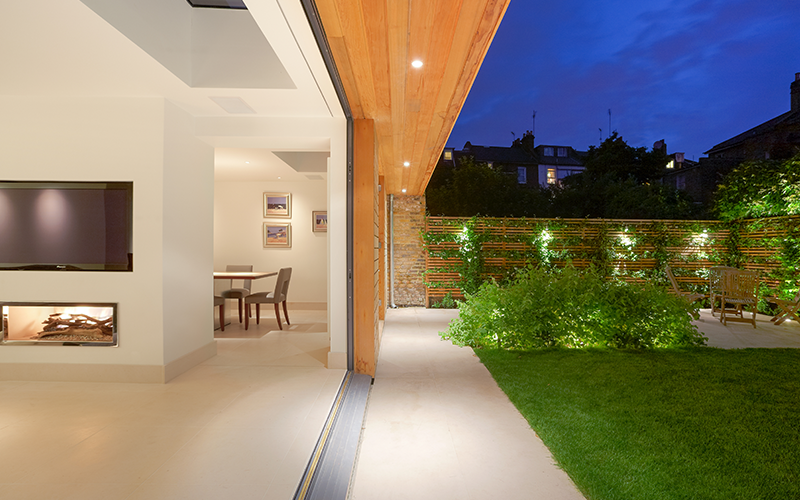
Extend the view
What is important is to light something immediately outside the window – such as the terrace – as this will draw the eye outside. To do this, one needs to control the intensity outside, so that it is greater than the light within the room. Once the focus of the eye is outside then the rest of the features can be enjoyed and become part of the space. Understanding the levels of internal and external light is essential. For best results, the interior should be slightly dimmed.
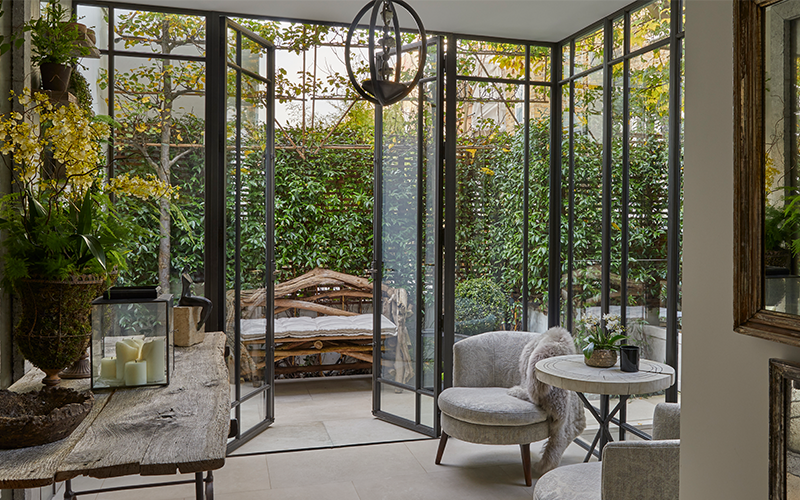
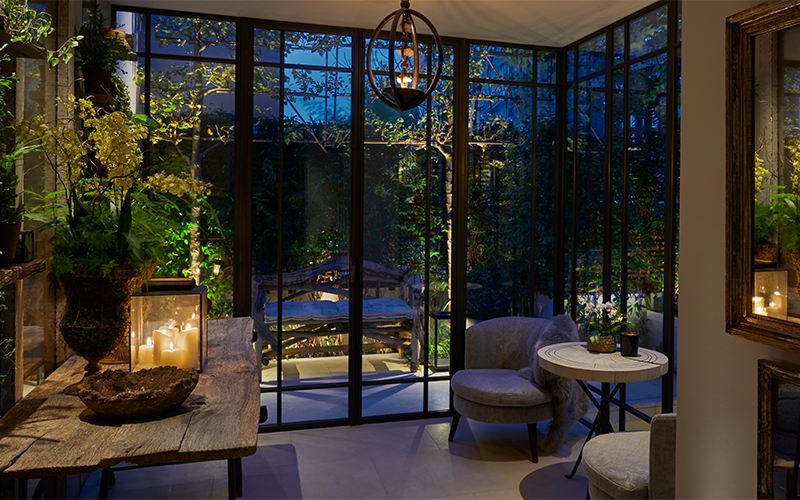
The small garden in an urban environment should be considered as an extra room and entertainment space. If there is a conservatory, then lighting outside is essential, as otherwise the space can feel uncomfortable as the glazing acts like a mirror and reflects everything, giving the feeling that everyone can see in. But lighting the area outside transforms this effect and allows you to feel more relaxed.
A lot of outside spaces are lit with a security floodlight, operated on a presence detector (PIR). While this is fine as a deterrent, the light is glaring and unpleasant to sit under when using the garden or terrace. I recommend an override switch for the evening, so that it can be turned off to ensure the remaining garden lighting effects are not destroyed. It can be switched on when going to bed.
Create the perfect lighting for outdoor entertaining
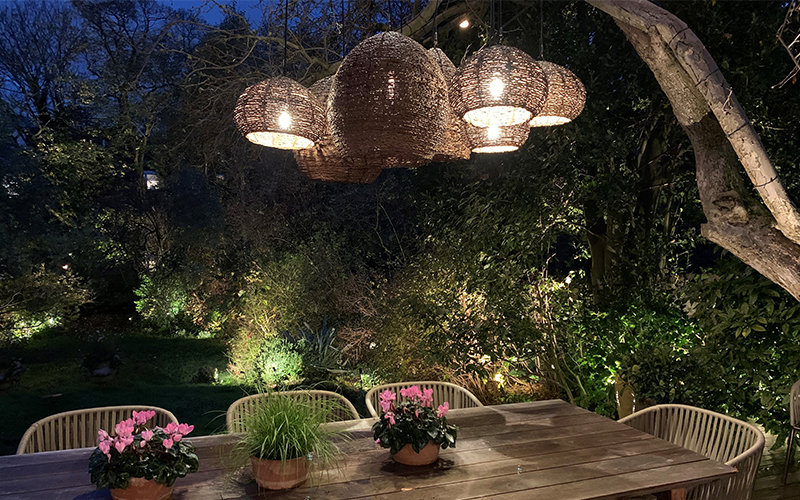
When entertaining alfresco, lighting your extra room extends the time you can spend there. Try to create a feature to focus on. With small gardens or internal courtyards, if there is a high wall nearby such as the side of the house, then fit a narrow highly baffled Kew spotlight to focus onto the table. This will be effective for dining and useful for highlighting displays. It needs to be high (2 storeys up at least) as one does not want the light fitting to tilt more than 10-15° from the vertical to avoid glare.
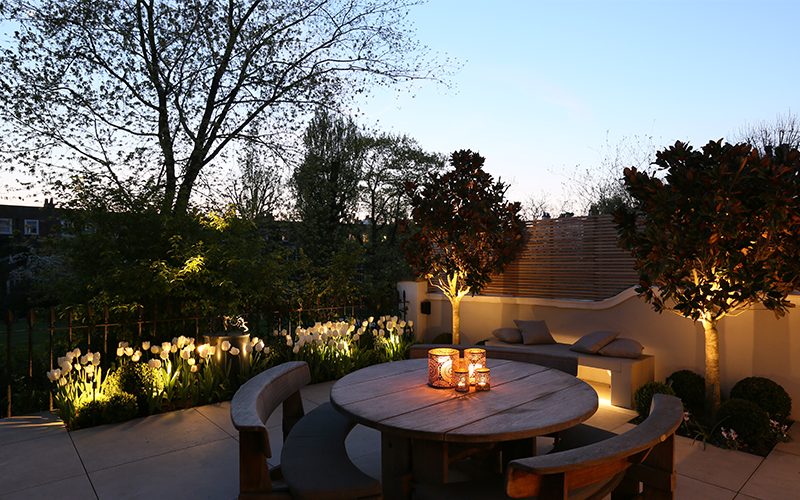
Add layers of light outside
Just as with interior lighting, the best outdoor effects are created with layering of light. The lighting toolbox is also similar to that for interiors, using decorative wall lights, uplights and downlights, linear and spotlights, and highlighting planting and features at different levels around the garden.

Decorative wall lights are good for ambient lighting. But, if they’re the only source of light, they can be glaring as the eye is drawn to the light source itself. This glare can be reduced by dimming the wall light and using a selection of fixtures for infill light such as spiked uplights for trees and maybe a small floodlight to low level planting. When selecting these spiked lights, it is important that the light source is concealed usually with a cowl (baffle), so that the effect is maximised without the glare. I tend to select olive green fixtures from the Kew range as they camouflage most effectively within planting. Black and stainless-steel fittings are usually far more noticeable.
Using spiked lights with long cables allows for flexibility of positioning the light within a flowerbed so that is can be repositioned to suit seasonal changes. However, these can be easily knocked by the gardener, so care and maintenance are required to ensure they are correctly positioned to maximise their effect.
Another useful technique is Carella Spike Light in pots, as well as among grasses. These can have a decorative candle-light look, and help with the other uplight and floodlights to provide interest on terraces.
Small Lucca uplights are also useful as they are fixed and will not move, which makes positioning critical. They are great for uplighting a textured stone or brick wall, or to emphasise the openings of a building or to give uplight to pots and sculptures. Ideally the product should have a variety of glare shields to reduce the visibility of the light source when close to it.
Downlights are useful in various places in the garden. If there is trellis or fencing, downlights are a good technique to make them a feature. Small Kew spotlights can be fixed to the trellis or fence to light downwards, with cabling concealed behind the trellis.
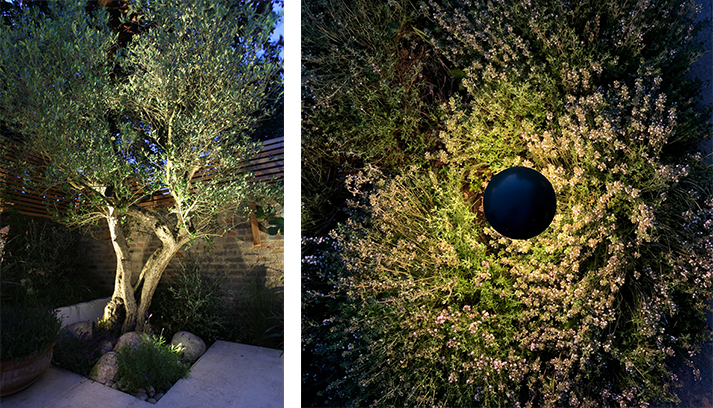
Another great garden lighting tool is integrated linear lighting. Contour HDX27 integrated into steps, can provide a soft background light. Linear LEDs can also be integrated under benches or to light a water feature. Used with a softening opal diffuser, they’re good for uplighting a wall or even linear box hedging. Another style of linear lighting is a glazing fixture that is usually multiple sources with linear lens optics to provide a stronger uplight than the linear LED with an opal diffuser.
How to link inside and outside
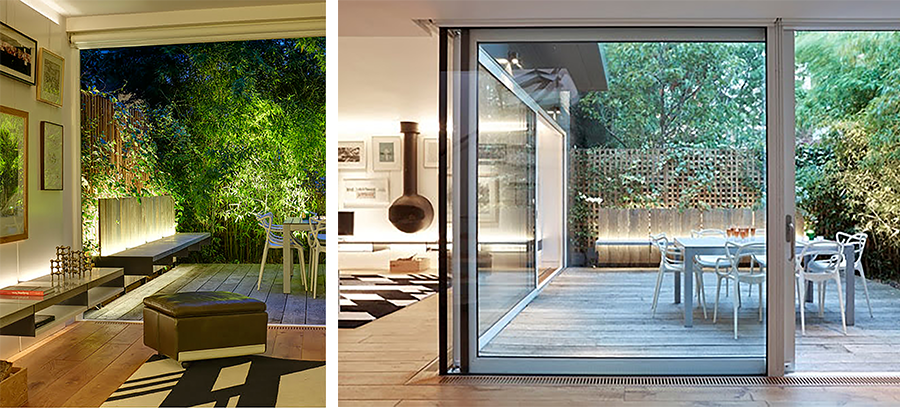
An internal courtyard garden is often found in the centre of a deep-plan home to create visual interest at the heart. It’s a wonderful feature within a home – giving a riad-like secret garden feel. It may be overlooked on all sides or at least two and from the same level or from above, so lighting needs to be considered from many angles. During the day, the purpose is to introduce natural light, and at night these private spaces can be excitingly lit, providing a pivotal focus to all surrounding rooms.
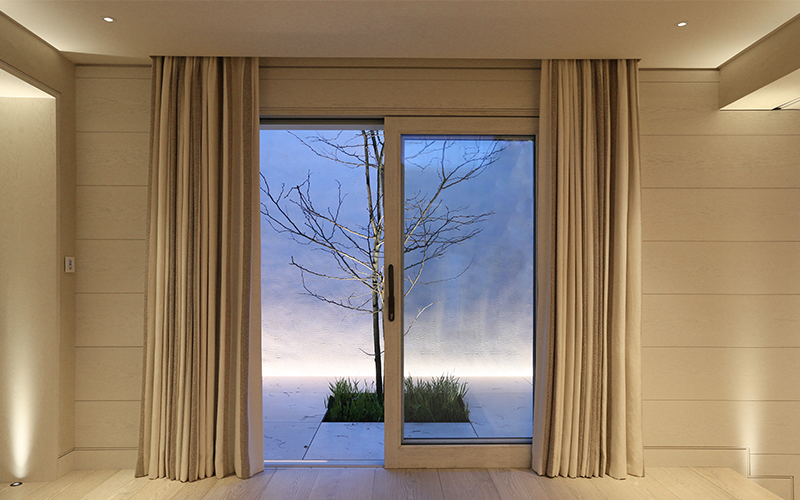
A good solution for internal courtyards where there is little light, because it is at lower ground-floor level or where limited planting will survive, is to light a sculpture or introduce multiple lanterns in an artistic way. Using multiple fittings always has impact and this technique can be used in many instances to add both light and creative appeal.
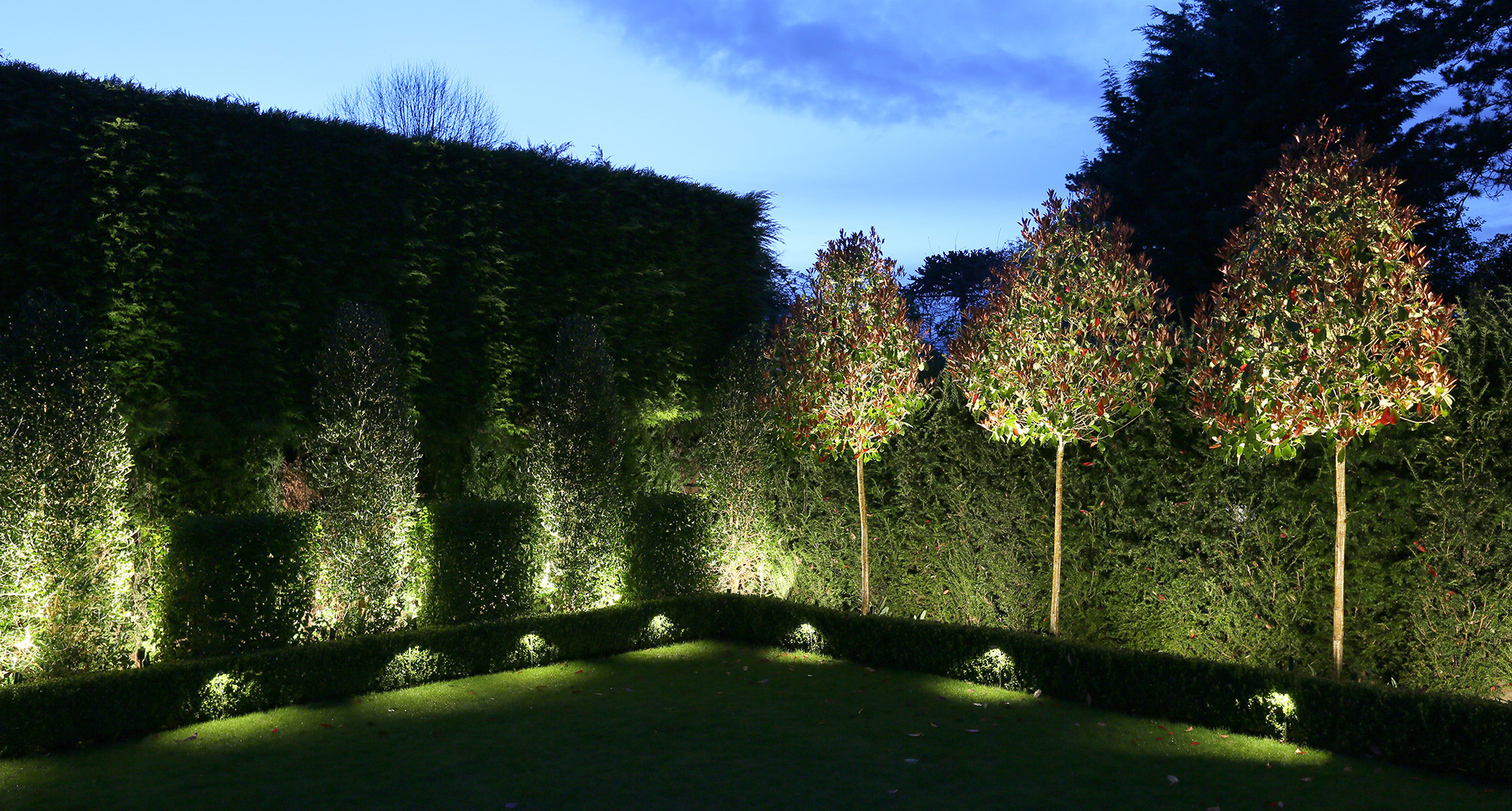
How to light a small lawn
For a small lawn the best solution is to light the perimeter. This can be with a combination of uplit trees with narrow Kew spiked spotlights and small Hampton floodlights. For these gardens a higher output spike of 8 watts would be better than the 1 watt fixtures used in smaller courtyards as there isn’t so much to light elsewhere. Ideally, try to install a feature – such as a sculpture or large pot – to draw the eye.
For top tips on how to light larger spaces, read our article on How to Light Larger Gardens.
If you need help lighting a small garden , do contact our design team to help you maximise the scheme.
Alternatively for the latest news, follow us on Instagram.


















